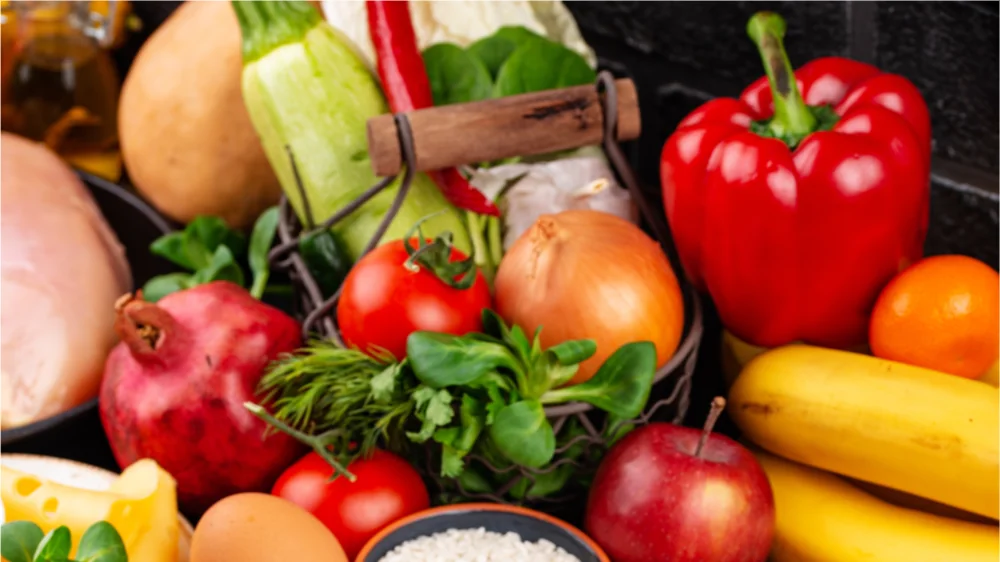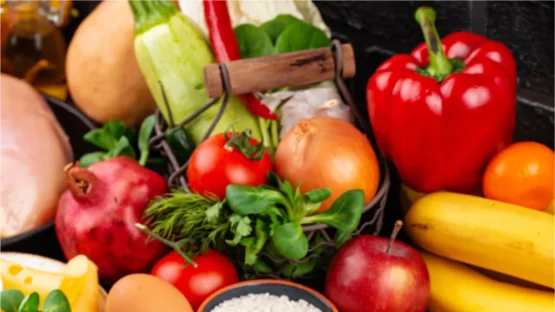Researchers investigated how much the consumption of flavonoids impacts the biological age of the heart, kidney, liver, and whole body [1].
Chronological age, biological age, and diet
Chronological age only refers to the number of years that have passed, but biological age refers to the lasting damage accumulated over those years. Unhealthy habits and behaviors, such as smoking and drinking alcohol, accelerate biological age. Biological age can also be accelerated due to chronic diseases and cancer. On the other hand, healthy dietary and exercise habits can decelerate biological age.
The Mediterranean diet is a known method of slowing down biological aging. Previous research has shown that adherence to the Mediterranean diet is associated with a biological age that is one year below chronological age [2, 3].
Fruits and vegetables are essential components of the Mediterranean diet, and the flavonoids found in those foods are the focus of this recent study. Flavonoids possess many beneficial properties, and previous research has found them to protect from oxidation, inflammation, mutagens, and carcinogens [4]. Due to these beneficial properties, the authors hypothesized that flavonoids may reduce the rate of biological aging.
To test their hypothesis, they used data from the National Health and Nutrition Examination Survey and the Food and Nutrient Database for Dietary Studies. They analyzed the flavonoid intake of 3,193 study participants who described their diets in a 24-dietary recall interview.
Assessing biological age
The authors categorized the study participants into three groups based on flavonoid intake. They determined participants’ whole body, cardiovascular, renal, and liver biological age using several biomarkers, including blood pressure, fasting glucose, fasting cholesterol levels, and fasting triglycerides. This study used a metric called ∆age to represent the difference between the biological and chronological ages of a single person.
The researchers observed some confounding factors, noting that participants with the highest flavonoid intake were less likely to be smokers or heavy alcohol users and were less likely to have hypertension, diabetes, or chronic kidney disease. However, they were more likely to be overweight. People with the highest flavonoid intake also ate more fiber, total fat, protein, and carbohydrates.
While people not suffering from chronic kidney disease had a ∆age of -0.62 years, the biological age of people with chronic kidney disease was higher than their chronological age, and their ∆age was 7.41 years.
Finding the correlation
The researchers observed lower ∆ages for the whole body and liver in the medium and highest intake groups. The group with the lowest flavonoid intake had a whole-body ∆age of 0.22 and a liver ∆age of 0.44. The medium group had -0.51 for the whole body and -4.15 for the liver. The group with the highest flavonoid intake had the greatest differences, as they ranged from -4.69 for the liver to -1.10 for the whole body.
Flavonoids are a diverse group of compounds that have different impacts on biological age. For example, isoflavones and flavones had a significant impact on delaying whole-body and cardiovascular aging.
Additionally, anthocyanidins showed a profound impact on the ∆age of the study participants. Participants with the highest intakes of anthocyanidins had the lowest ∆ages for the whole body (-1.45), cardiovascular system (-1.87), renal system (-1.10), and liver (-6.31). Differences between sexes were also observed, with females showing higher liver ∆age but lower whole body, cardiovascular, and renal ∆ages.
Overall, the authors reported that higher flavonoid intake was inversely correlated with whole body, cardiovascular, and liver ∆age. After analysis of analyzed multiple variables, they found that “higher intake of total flavonoids was found to be associated with a lower biological age of the cardiovascular, hepatic, and whole body among White participants who did not smoke, consume alcohol, and were free from chronic diseases.”
This analysis aligns with previous studies that link compounds like flavonoids and improvement in various markers of aging. While this study does not prove causation, the researchers hold that this correlation results from the antioxidant and anti-inflammatory properties of flavonoid-rich diets.
Literature
[1] Xing, W., Gao, W., Zhao, Z., Xu, X., Bu, H., Su, H., Mao, G., & Chen, J. (2023). Dietary flavonoids intake contributes to delay biological aging process: analysis from NHANES dataset. Journal of translational medicine, 21(1), 492.
[2] Esposito, S., Gialluisi, A., Costanzo, S., Di Castelnuovo, A., Ruggiero, E., De Curtis, A., Persichillo, M., Cerletti, C., Donati, M. B., de Gaetano, G., Iacoviello, L., Bonaccio, M., & On Behalf Of The Investigators For The Moli-Sani Study (2021). Dietary Polyphenol Intake Is Associated with Biological Aging, a Novel Predictor of Cardiovascular Disease: Cross-Sectional Findings from the Moli-Sani Study. Nutrients, 13(5), 1701.
[3] Gialluisi, A., Di Castelnuovo, A., Costanzo, S., Bonaccio, M., Persichillo, M., Magnacca, S., De Curtis, A., Cerletti, C., Donati, M. B., de Gaetano, G., Capobianco, E., Iacoviello, L., & Moli-sani Study Investigators (2022). Exploring domains, clinical implications and environmental associations of a deep learning marker of biological ageing. European journal of epidemiology, 37(1), 35–48.
[4] Panche, A. N., Diwan, A. D., & Chandra, S. R. (2016). Flavonoids: an overview. Journal of nutritional science, 5, e47.




